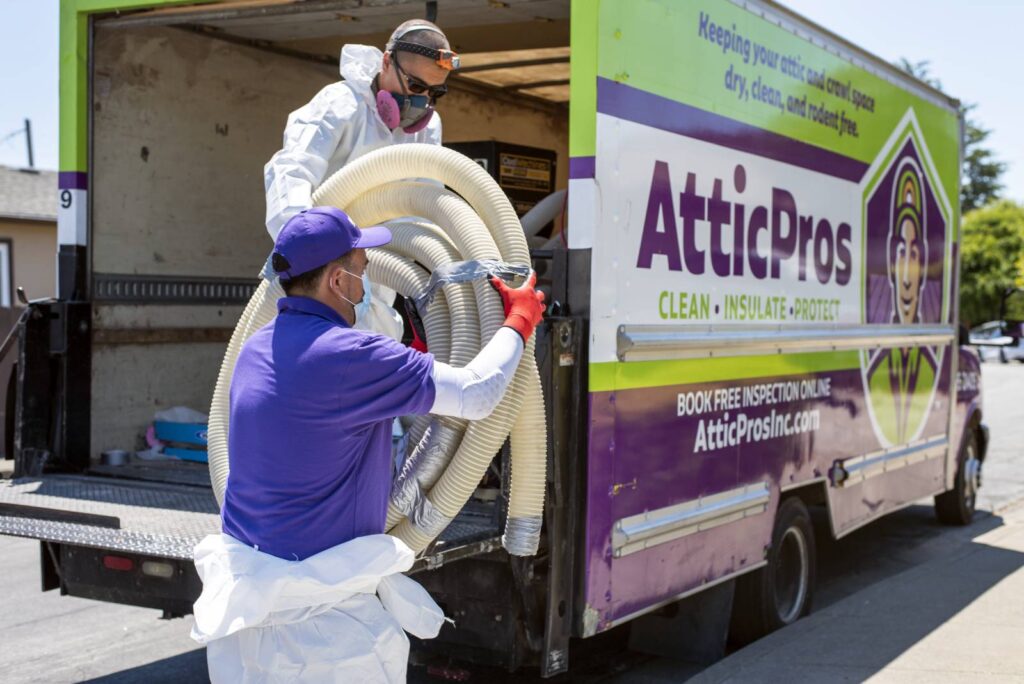Do Radiant Barriers Damage Shingles? Truth or Fiction
Have you ever heard of a radiant barrier and wondered how it could affect your roof shingles? Radiant barriers, installed in attics, can improve energy efficiency and comfort in your home.
However, some people have heard that installing them might damage shingles. In this article, we will discuss the benefits of radiant barriers and address these concerns to help you make an informed decision.
Basics of Radiant Barriers
A radiant barrier is a type of insulation designed to reduce heat transfer in your home. Common materials used in radiant barriers include foil-faced plywood, reflective foil insulation, and radiant barrier paint.
These barriers work by reflecting radiant heat back, preventing it from entering your living space. Installed correctly, they can make a significant difference in your home’s energy efficiency and indoor comfort.
Benefits of Radiant Barriers
Homeowners will enjoy several advantages from a professionally installed radiant barrier in their attic, including:
Improved energy efficiency: Radiant barriers can reduce the amount of heat transferred into your home, leading to lower energy costs.
Improved indoor comfort: By reflecting radiant heat back and maintaining consistent temperatures, radiant barriers help reduce drafts and hot/cold spots in your home.
Environmental impact: With a radiant barrier installed, you can lower your reliance on non-renewable energy sources and reduce greenhouse gas emissions.
Extended life of HVAC systems: Less heat transfer means your heating and cooling systems don’t have to work as hard, potentially extending their lifespan.
Will Your Shingles Survive a Radiant Barrier?
Some homeowners worry that installing a radiant barrier may cause the roof to get hotter, leading to potential damage to roof shingles. Additionally, there are concerns about the effect of radiant barriers on shingle manufacturers’ warranties. In this section, we will explore these concerns and discuss how they can be addressed.
Will a Radiant Barrier Cause Shingles to Overheat?
The short and sweet answer is no. A roof equipped with a radiant barrier will experience a temperature rise of only a few degrees (typically between 2º and 10º degrees Fahrenheit). This small increase is deemed nominal. Standard roofing systems can handle temperatures significantly higher than what they actually reach in real-world situations.
Most shingle manufacturers offer warranties for their products over a radiant barrier. Many regions even mandate radiant barriers for new construction due to the energy savings they produce.
What Affects Roof Temperature?
Two main factors determine the highest temperature a roof will reach: color and ventilation. If you are worried about your shingles overheating, the color of your roof is the greatest priority. Dark-colored roofs can be over 20ºF hotter than light-colored ones.
Secondly, air temperature and wind movement over and beneath the roof impact the temperature.
While the roof absorbs radiant heat from the sun, airflow (wind or attic ventilation) cools the roof, helping to lower the overall temperature. The cooler a roof, the less radiant heat it emits.
If your roof’s temperature never exceeded the outside air temperature, you wouldn’t need a radiant barrier. This is why shaded homes don’t benefit much from radiant barrier installation.
In addition, every roof reaches a point where the maximum temperature stabilizes. This occurs when the heat absorbed from the sun and heat loss due to radiation, ventilation, and air temperature equalize. A typical roof on a hot, sunny day stabilizes between 140º – 180º without a radiant barrier beneath it.
Where Does Reflected Heat Go?
Installing a radiant barrier in the attic will raise the roof temperature by only a few degrees (usually 2-10º). Heat that would usually be absorbed by insulation is now reflected back to the roof deck.
The radiant barrier forces the roof to emit more heat upward instead of both upward and downward. The roof still gains and loses heat; the radiant barrier simply redirects the same amount of heat away from the attic and attic insulation.
Imagine a room with a single light source (an unshaded light bulb) hanging in the center. Normally, the bulb emits light (and heat) in all directions, illuminating the room. Adding a reflector to the bulb directs the light (and most of the heat) downward, below the reflector.
The amount of light (and heat) hasn’t changed; what has changed is the direction the light and heat are going. Similarly, with a radiant barrier, the amount of heat on a roof doesn’t change much. Instead of heat radiating in all directions, it’s mostly radiated upward and away from the inside of the attic.
A Radiant Barrier Will Not Overheat Your Roof
In short, you won’t put your roof in danger of overheating with a radiant barrier installation. The reflective material simply redirects the heat that would otherwise enter your home to make your life uncomfortable. Every extra degree of energy your roof radiates back out into space equates to dollars saved on energy bills.
Radiant barriers are an excellent investment for homeowners looking to improve their home’s energy efficiency and comfort. The concerns regarding shingles overheating have been debunked. Studies show that the slight increase in roof temperature is nominal and does not significantly impact shingle performance.
If you’re considering installing a radiant barrier for the attic roof, trust Attic Pros as the best radiant barrier installation service in your area. With their expert knowledge, quality materials, and professional installation, you can be confident that your home will benefit from the energy-saving and comfort-enhancing advantages of a radiant barrier. Schedule a consultation and take the first step towards a more energy-efficient and comfortable home.

